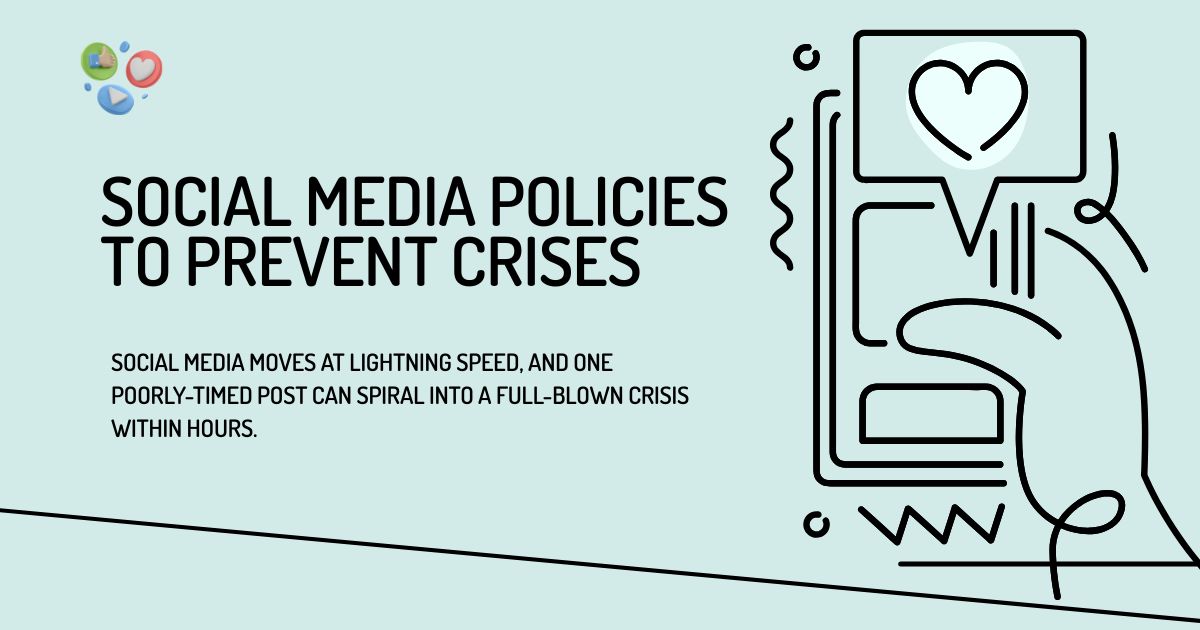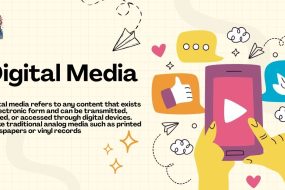
Social media moves at lightning speed, and one poorly-timed post can spiral into a full-blown crisis within hours. Companies across industries have learned this lesson the hard way—from insensitive tweets during national tragedies to employees sharing confidential information on personal accounts. The good news? Most social media crises are preventable with the right policies in place.
A well-crafted social media policy serves as your organization’s first line of defense against reputational damage, legal issues, and internal confusion. This comprehensive guide will walk you through creating robust social media policies that protect your brand while empowering your team to engage authentically online.
Understanding Social Media Crisis Risks
Before diving into policy creation, it’s crucial to understand the various ways social media can create problems for your organization. These risks fall into several categories, each requiring specific preventive measures.
Brand Reputation Threats
Your brand reputation can be damaged in multiple ways through social media. Tone-deaf posts that seem insensitive to current events can alienate customers and generate negative press coverage. Inconsistent messaging across platforms confuses audiences and weakens brand identity. Even well-intentioned posts can backfire if they’re misinterpreted or taken out of context.
Customer complaints that go unaddressed or are handled poorly in public forums can escalate quickly. When other users see your company ignoring or dismissing concerns, it creates a negative perception that spreads far beyond the original complaint.
Legal and Compliance Issues
Social media posts can create legal liabilities for your organization. Employees might unknowingly share confidential information, violate copyright laws by using unauthorized images, or make claims about products that run afoul of regulatory requirements.
Companies in regulated industries face additional challenges. Healthcare organizations must comply with HIPAA requirements, financial services firms must follow SEC guidelines, and any company handling personal data must consider privacy regulations like GDPR.
Internal Security Risks
Social media can expose your organization to security threats. Employees might inadvertently share sensitive information about upcoming projects, reveal office locations and schedules, or fall victim to social engineering attacks through professional networking platforms.
Location-based posts can create security risks by revealing when key personnel are traveling or when facilities might be less secure. Photos and videos can accidentally capture sensitive information in the background, from computer screens to confidential documents.
Learn How to Manage Viral Negative Campaigns
Essential Elements of Social Media Policies
Effective social media policies address both official company accounts and personal employee usage. They should be comprehensive enough to cover various scenarios while remaining practical for daily implementation.
Account Management Guidelines
Clear guidelines for managing official company accounts prevent confusion and ensure consistency. Designate specific individuals who are authorized to post on behalf of the company, and establish a clear chain of command for approvals.
Create separate protocols for different types of content. Routine posts about company news or industry insights might require only basic approval, while posts addressing sensitive topics or crisis situations should go through senior leadership review.
Implement a content calendar and approval workflow that allows for both planned content and timely responses to current events. This balance ensures your social media presence remains active and relevant while maintaining appropriate oversight.
Personal Account Boundaries
Many social media crisis originate from employee personal accounts, making it essential to provide clear guidance on personal usage. Employees should understand when and how their personal posts might reflect on the company.
Establish guidelines for employees who identify their workplace in their profiles. These individuals should understand they’re viewed as company representatives and should post accordingly. However, be careful not to infringe on employees’ rights to express personal opinions on their own time.
Provide specific examples of what constitutes appropriate versus inappropriate personal posting. This helps employees understand the boundaries without feeling overly restricted in their personal expression.
Content Approval Processes
Develop streamlined approval processes that don’t hinder your ability to engage in real-time conversations. Create different approval levels based on content type, risk level, and platform.
For high-risk content—such as posts about controversial topics, legal matters, or crisis situations—require multiple levels of approval including legal and senior leadership review. For routine content, a single approval from a designated social media manager may suffice.
Document your approval process clearly and train all relevant staff on procedures. Include backup approval authority for times when primary approvers are unavailable.
Creating Platform-Specific Guidelines

Different social media platforms have unique characteristics, audiences, and risks. Your policy should address these platform-specific considerations while maintaining overall consistency.
Professional Networking Platforms
LinkedIn and similar professional platforms require special attention because employees often use them for career development while still representing your company. Provide guidance on how employees should describe their role and company in their profiles.
Establish guidelines for sharing company content on personal professional profiles. While employee advocacy can be valuable, ensure employees understand what content is appropriate to share and how to share it properly.
Address the handling of industry discussions and debates on professional platforms. Employees should know how to engage in professional conversations without creating conflicts of interest or revealing confidential information.
Visual Content Platforms
Instagram, TikTok, and other visual platforms present unique challenges around image rights, location privacy, and content appropriateness. Develop specific guidelines for photo and video content, including requirements for obtaining permission when featuring people or private property.
Create guidelines for using company logos, products, or branding in visual content. Ensure employees understand trademark and copyright requirements when creating content featuring company assets.
Address the use of filters, editing, and other visual effects that might misrepresent products or services. Establish standards for authentic representation while allowing for creative expression.
Real-Time Engagement Platforms
Twitter and other platforms that emphasize real-time engagement require rapid response capabilities balanced with appropriate oversight. Develop procedures for handling breaking news, trending topics, and current events.
Create guidelines for engaging with customer complaints and concerns in public forums. Train staff on when to move conversations to private channels and how to handle escalating situations professionally.
Establish protocols for monitoring and responding to mentions, hashtags, and industry conversations. Ensure your team knows how to identify opportunities for positive engagement while avoiding potential pitfalls.
Implementation and Training Strategies
Having a comprehensive policy is only the first step. Successful implementation requires ongoing training, clear communication, and regular updates to address evolving social media landscapes.
Employee Education Programs
Develop training programs that go beyond simply reviewing policy documents. Use real-world examples and case studies to illustrate the principles behind your guidelines. This helps employees understand not just what to do, but why these guidelines exist.
Create different training modules for different roles within your organization. Social media managers need comprehensive training on all aspects of your policy, while general employees might need focused training on personal account guidelines and confidentiality requirements.
Make training interactive and engaging. Use workshops, simulations, and group discussions to help employees internalize the principles rather than just memorize rules.
Regular Policy Updates
Social media platforms evolve rapidly, and your policies must keep pace. Establish a regular review schedule to update your policies based on new platform features, changing regulations, and lessons learned from your own experiences or industry incidents.
Create a system for communicating policy updates to all relevant staff. Ensure updates are distributed promptly and that employees understand how changes affect their responsibilities.
Monitor industry trends and competitor experiences to identify potential new risks or opportunities that should be addressed in your policies.
Crisis Response Protocols
Despite your best preventive efforts, social media crises can still occur. Develop clear protocols for identifying, escalating, and responding to potential crises quickly and effectively.
Create a crisis response team with clearly defined roles and responsibilities. Ensure team members are trained on their specific duties and have the authority to act quickly when situations develop.
Establish communication channels and decision-making processes that function outside of normal business hours. Social media crises don’t wait for convenient timing.
Monitoring and Enforcement

Effective social media policies require ongoing monitoring and consistent enforcement. This ensures guidelines remain relevant and employees understand their importance.
Social Media Monitoring Tools
Implement monitoring tools that track mentions of your company, key personnel, and relevant industry terms across social media platforms. This helps you identify potential issues early and respond appropriately.
Monitor both official company accounts and publicly available employee posts that might relate to your organization. Focus on identifying potential policy violations or emerging crisis situations.
Use monitoring data to identify trends, measure the effectiveness of your policies, and spot areas where additional training might be needed.
Consistent Enforcement
Develop clear consequences for policy violations and apply them consistently across all levels of your organization. This ensures employees take the policies seriously and understand their importance.
Create a graduated response system that considers the severity of violations and whether they were intentional or accidental. First-time minor violations might warrant additional training, while serious breaches might require disciplinary action.
Document all policy violations and responses to ensure consistency and protect your organization from potential legal issues.
Read our latest blog What Is Media Relations?
Your Path Forward
Creating effective social media policies requires ongoing attention and refinement. Start by assessing your current social media risks and existing policies. Identify gaps and prioritize areas that pose the greatest threats to your organization.
Engage stakeholders from across your organization in policy development. Include perspectives from legal, HR, marketing, and operational teams to ensure your policies are comprehensive and practical.
Remember that social media policies should enable effective communication and engagement, not prevent it entirely. The goal is to create guidelines that protect your organization while empowering your team to build meaningful connections with your audience.
Begin implementing your social media policies gradually, starting with the most critical elements and building complexity over time. This approach allows you to refine your policies based on real-world experience and ensures better adoption across your organization.



















No Comments